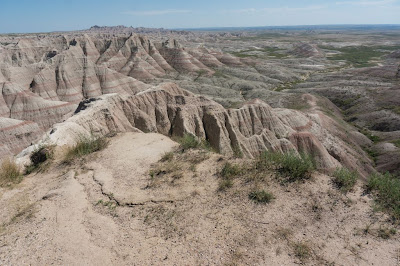To see ALL the photos from our trip, just click HERE.
Sep 9, 2013
Well our long journey is coming to an end. This Wednesday we return to New York, flying. We drove one of Dani and Erik's two cars all the way here, covering some 12 states and some 3,200 miles, including a stop at my sister's house in Ohio for a few days. It was very tiring but quite an adventure. I come away with a rewnewed appreciation of the immense size of our country and the incredible beauty, particularly of the western states with their forests, mountains and waterways. I am also thankful to those pioneers who had the foresight to fight for the preservation of these vast areas of beauty and wilderness so that they remain unspoiled from deforestation, mining and commercial exploitation for all time to come. This is a precious gift that we must be vigilant to protect for there are those who would undo that protection. Think "drill baby, drill!"
 |
| Our route, from shore to shining shore. |
***
After Glacier National Park, we took US Route 2 west through Montana to the Idaho border. Here we crossed that state's panhandle - the slender finger of Idaho that points north to separate Montana and Washington. We were on our way to Spokane where we'd stop for the night - our last night on the road. Staying off the interstate in Idaho, our route took us through some pretty Idaho towns. At Bonners Ferry, we turned south on US Route 95. Had we turned right and headed north, we would have been in Canada in 30 miles, so close were we to the border. The resort town of Sandpoint was situated on a an enormous glacial lake, Lake Pend Oreille and was quite beautiful.
  |
| The Famous Potatoes state. We lost another hour here. |
 |
| We could have turned right here and hit Canada in half an hour...but no passports. Maybe next time. Remember, clicking on any photo allows you to see it larger and clearer. Then hit escape to return. |
 |
| Spokane Falls as it cascades down through the center of the city. |
 |
| This was very peculiar: a pedestrian brdige used to cross the streets. Behind it a historic old building. Thoughtless design I thought. |
An interesting side note on Washington state: Reading the Times on my laptop each night, there was an article that discussed the need for revitalization of labor in this country. Washington state has a strong labor movement that has built long lasting relations with communities throughout the state. The state already has the highest minimum wage in the country, $9.19 per hour and now in the town of Seatac, just south of Seattle, labor and community forces are pushing to organize the low-paid workers at the airport of the same name. They are pushing for a public referendum that would create the country's highest minimum wage, $15.00 per hour. Which just goes to prove the adage that when labor is strong, everyone wins. By "everyone" I refer to the 99 percent of us who make up the great majority of our country.
Back to our trip: The eastern half has vast areas of wide open and arid grasslands - actually a desert. But much has been reclaimed. During the Depression, FDR constructed the Grand Coulee dam (the largest concrete structure in the world!) which was used to electrify the area plus supply water for irrigation that turned the desert into productive farmland. As we traversed Interstate 90, one could see out to the remote horizon at this incredible spread of farmland.
The western third of the state contains the Cascade mountains beyond which are Seattle and the Pacific. We finished our trip and reached Poulbo and Dani and Eric's new house late Thursday afternoon. We were tired and exhilarated. I don't know the next time we'll make such a trip but if we do, it'll definitely be without three dogs in the back of the car. There will plenty to explore out here over the next two years (that's the length of Erik's assignment). So fly or drive ... we'll be back.
 |
| Eastern Washington's wide open spaces - converted desert that now produces apples, pears and fabulous grapes for wine. |
The Columbia basin dominates the eastern two-thirds of the state. The dividing line is the Cascade mountain range which begins after you cross the mighty Columbia River. We wanted to stop and see the Grand Coulee dam but that would have added quite few hours to the trip. As Woody Guthrie called it in his famous song, Roll On Columbia, "the biggest damn thing ever built by the hand," the construction put thousands back to work in the hard-hit West of the depression years and helped build prosperity for Americans out of despair -- a tremendous lesson for today. Listen to Country Joe McDonald sing Guthrie's song here or click PLAY below:
 |
| We crossed the Columbia River as traveled into western Washington. Took our breath away with its awesome beauty! |
 |
| Stacey looks out over an incredible valley carved by the mighty Columbia. |
The western third of the state contains the Cascade mountains beyond which are Seattle and the Pacific. We finished our trip and reached Poulbo and Dani and Eric's new house late Thursday afternoon. We were tired and exhilarated. I don't know the next time we'll make such a trip but if we do, it'll definitely be without three dogs in the back of the car. There will plenty to explore out here over the next two years (that's the length of Erik's assignment). So fly or drive ... we'll be back.
I sincerely hope you enjoyed taking the trip with us.











































